 |
Red-tail Boa Constrictor (Boa constrictor constrictor) Paul Whitten |
|
The red-tail boa is distributed from the Amazonian forests of Colombia to northern Argentina. It is very polymorphic and reaches an average size of six and a half to ten feet. The disposition of the red-tail boa and its beautiful coloration has made it a popular species in the pet trade and it is regularly bred in captivity Captive red-tail boas most commonly mate from November to February and give birth in July or August. In the wild |
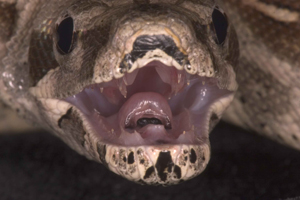 |
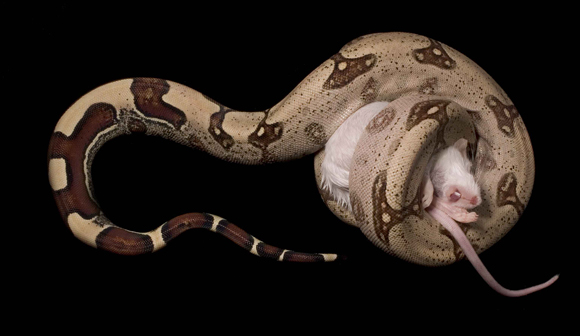 |
|
however, this varies quite a bit according to region. Boa constrictors give birth to live young as do 30% of the world’s snakes. Gestation is from four to eight months. Neonate red-tails are about one foot long when they are born and their first meals consist of small warm blooded animals such as mice or young birds. |
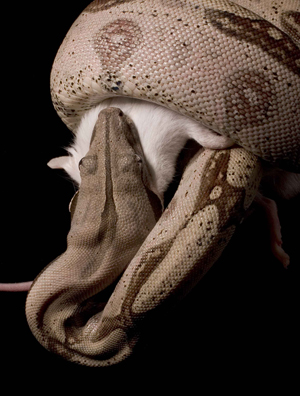 |
Red-tail boas are one of many species of snakes that use the method of constriction to kill their prey. Within seconds after seizing its prey with its needle sharp curved teeth, the boa quickly wraps a portion of its body around the animal. Each time the prey exhales, the coils of the snake tighten putting pressure on the circulatory system and preventing expansion of the lungs. In a short time the animal dies from asphyxiation. Like other snakes the red-tail boa is able to swallow food items that are much larger than its own head. This is because the bones of the lower jaw are not attached to the skull. The elasticity of the skin, ligaments, and muscle allow the snake’s mouth to stretch around a large prey animal as the jaws alternate |
|
grabbing and pulling the prey into the throat. Muscle contractions then move the food down to the stomach. There are about 3,700 known species of snakes and it is likely that there are quite a few more that are yet to be identified. The red-tail boa in all of its variations is a truly beautiful and fascinating creature. |
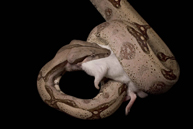 |
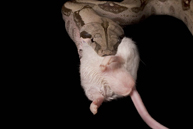 |
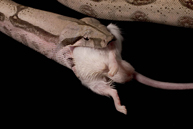 |
|
Photography: The photographs in this article were taken with a Canon 10-D digital camera with a 50mm macro lens. The image quality was set to raw and the aperture set to 32. The light source was a Canon macro ring light kit model MR-14EX. The ring flash was hand held to the left of the camera to increase texture and a reflector card was used for fill light. The background was simply black felt draped over three wood blocks that surrounded the subject. |
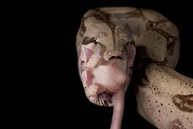 |
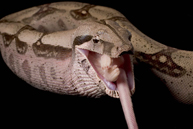 |
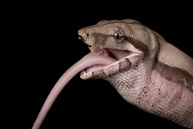 |
Credits:
Information on Boa constrictor constrictor was obtained from “the Reproductive Husbandry of Pythons and Boas” by Richard A. Ross and Gerald Marzec, “Boas” by Doug Wagner, and from my own personal experience with keeping and breeding red-tail boas.
All photography by Paul Whitten copyrighted 2004
contact: pmwhitten@yahoo.com
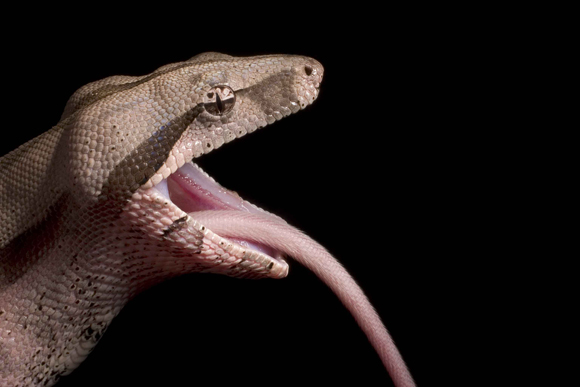 |